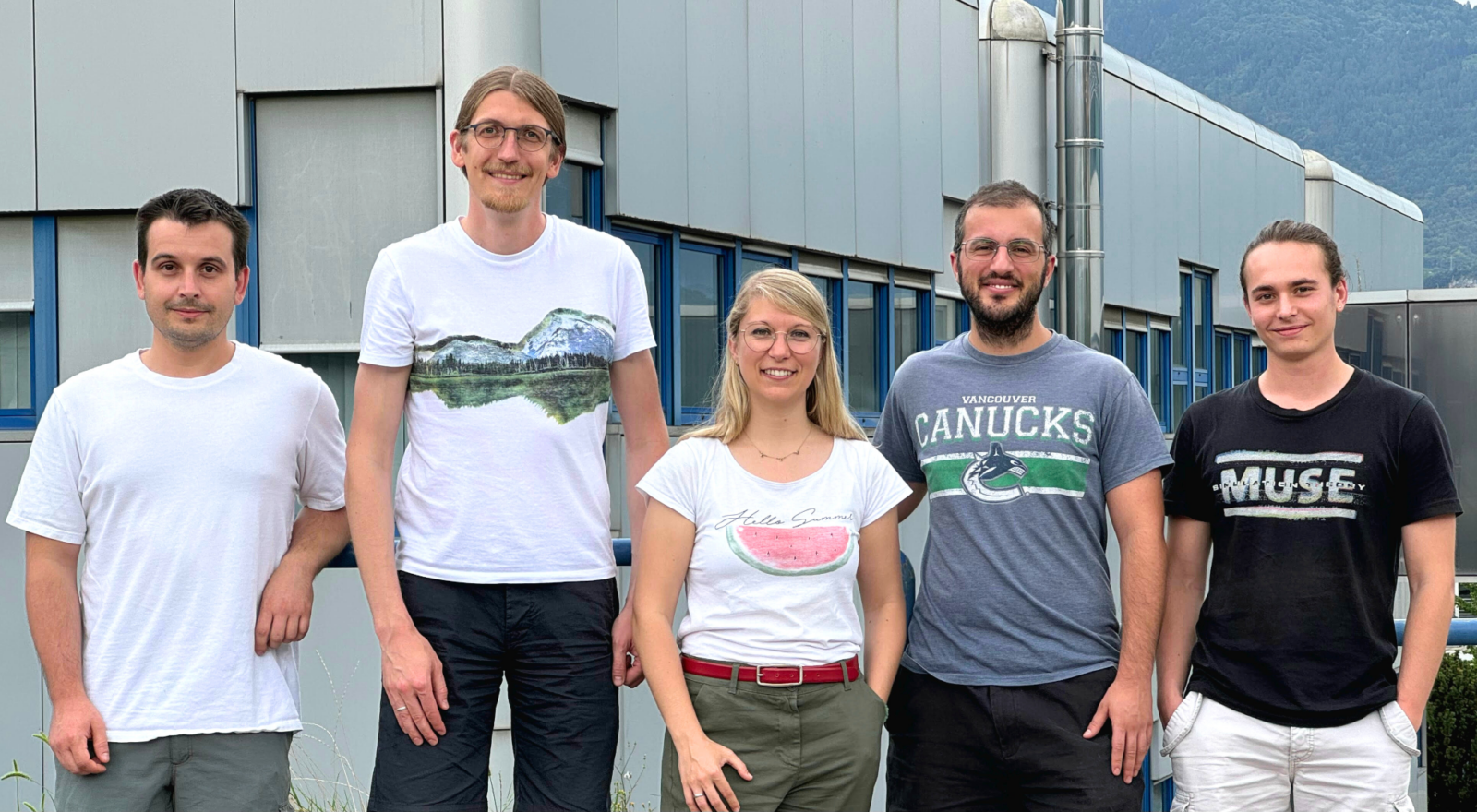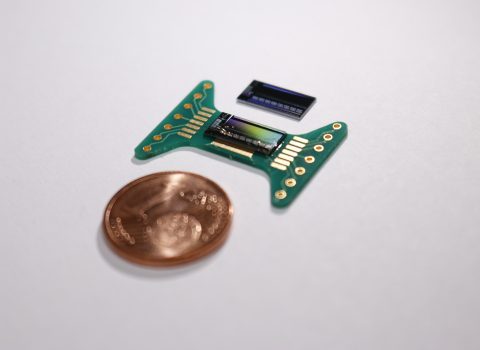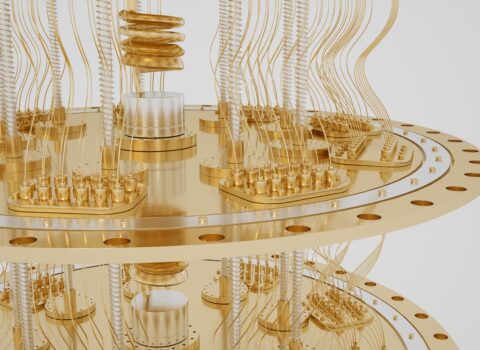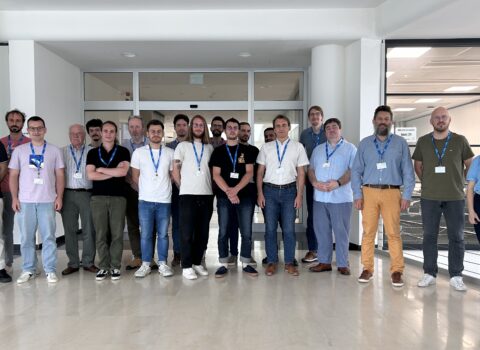
In Trento the first superconducting qubit made in Italy
At the Fondazione Bruno Kessler in Trento, the first superconducting quantum bit (qubit) built entirely in Italy was born.
In the laboratories of the Fondazione Bruno Kessler, a research team with expertise in superconducting quantum circuits has produced the first qubit made in Italy.
“A qubit,” explains FBK researcher and team coordinator Federica Mantegazzini, “is a circuit only a few micrometres in size that behaves like an artificial atom. While the properties of an atom are determined by nature, a circuit can be custom-designed and constructed, making it ideal for studying quantum phenomena. Furthermore, the qubit is the basic component of various quantum applications, present and future, such as ultra-sensitive quantum sensors, quantum simulators and quantum computers. The construction of the first superconducting qubit in Italy is a key achievement for our team, which will allow us to develop ever more advanced quantum circuits. In Italy, many groups have been working with superconducting qubits, which are, however, produced abroad and ‘imported’ into Italian laboratories. Being able to make superconducting qubits in Italy is an important milestone and the first qubit manufactured at FBK is the first step in this direction. We now aim to further improve our technology and optimise the properties of the circuit, and then exploit the full potential of FBK Clean Rooms that are suitable for large-scale microfabrication.”
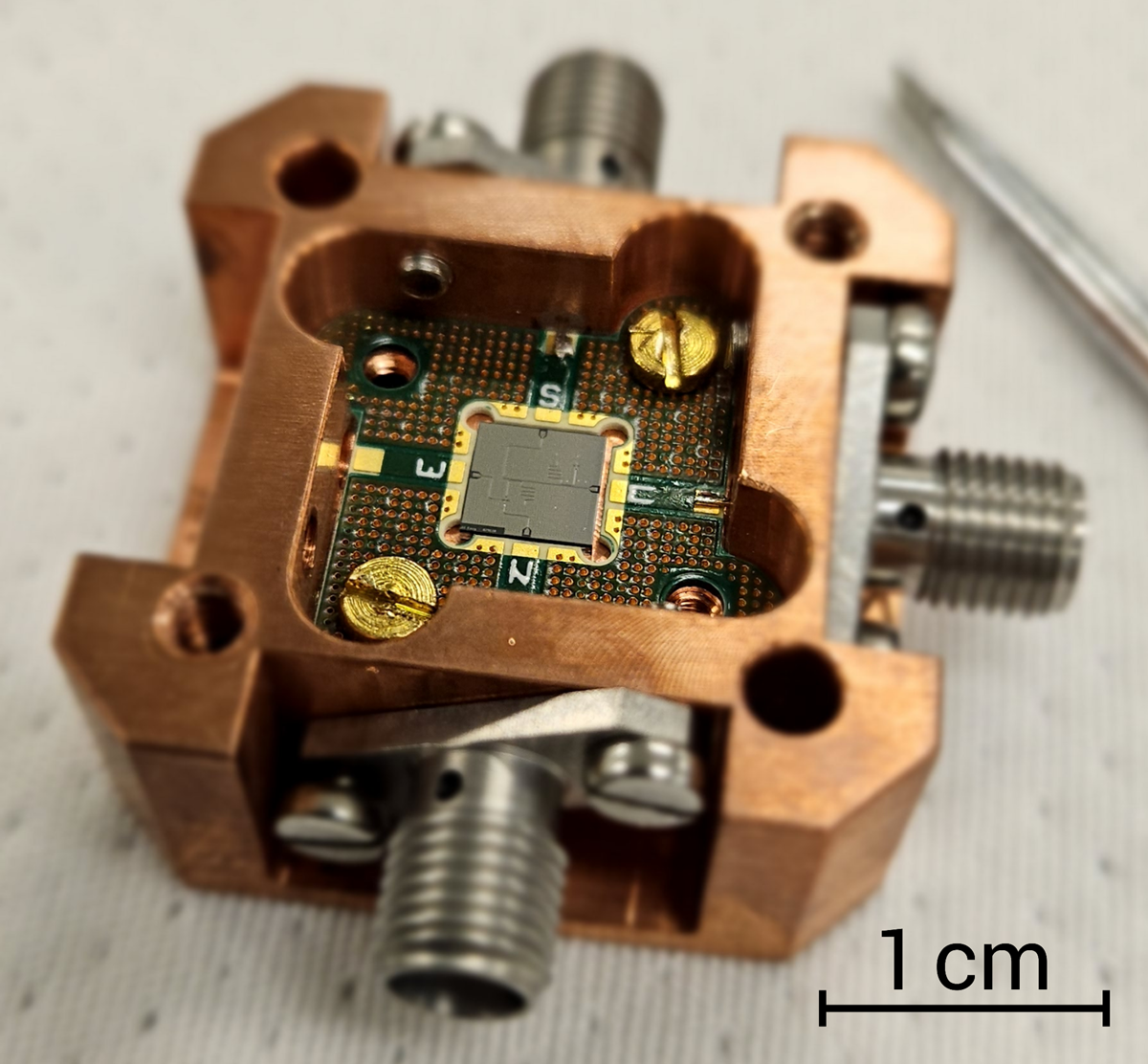 The qubit was tested at temperatures close to absolute zero using electronics that send and control signals with a duration of less than one billionth of a second. Initial measurements on the device, conducted in the cryogenic laboratory in Trento, have proved the quantum nature of the circuit, showing that the qubit behaves just like an atom, with quantised energy levels.
The qubit was tested at temperatures close to absolute zero using electronics that send and control signals with a duration of less than one billionth of a second. Initial measurements on the device, conducted in the cryogenic laboratory in Trento, have proved the quantum nature of the circuit, showing that the qubit behaves just like an atom, with quantised energy levels.
The challenge was to learn how to manufacture the most complex elements of the qubit, called Josephson junctions. For this purpose, a specific microfabrication process was studied and developed in FBK’s Clean Rooms. These are micrometric Aluminium structures composed of extremely thin barriers – a millionth of a millimetre thick – through which pairs of electrons can travel thanks to the complex phenomenon of quantum tunnelling. The ability to manufacture a qubit based on these junctions demonstrates FBK’s excellence and leading role in the development of quantum science and technology.
The people who composed the FBK team who has worked on the qubit manufacturing are: Felix Ahrens (FBK researcher), Nicolò Crescini (FBK researcher), Marcello Faggionato (master student FBK-Milano-Bicocca), Alessandro Irace (PhD FBK-Milano-Bicocca), Federica Mantegazzini (FBK researcher and team coordinator) and Benno Margesin (FBK senior fellow).
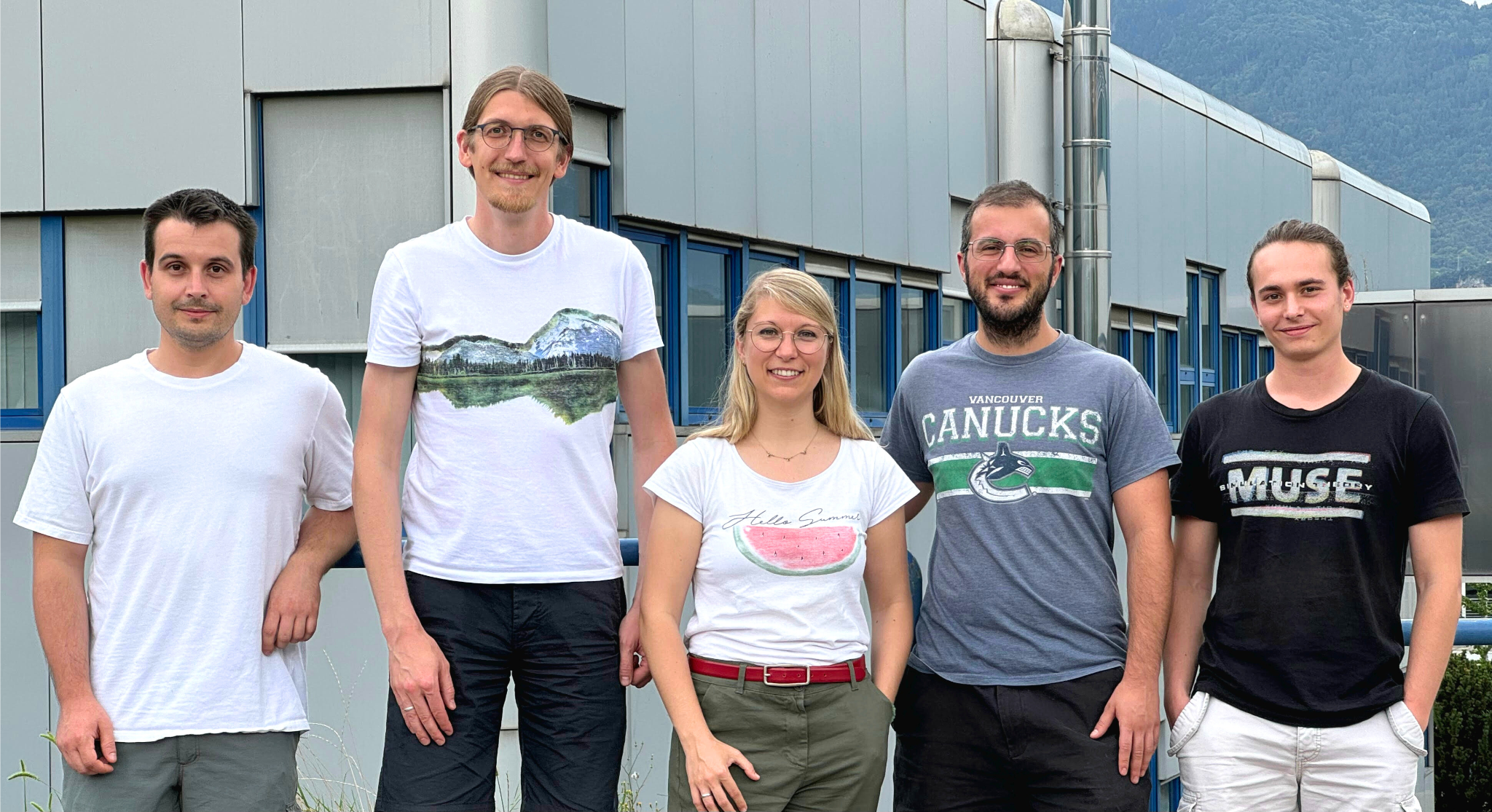
The FBK team – From left to right – Nicolò Crescini (FBK researcher), Felix Ahrens (FBK researcher), Federica Mantegazzini (FBK researcher & team coordinator), Alessandro Irace (PhDFBK-Bicocca), Marcello Faggionato (Master student FBK-Bicocca). Not in the picture – Benno Margesin (senior fellow FBK).
The qubit produced in Trento is a demonstrator based on the most popular qubit design, the transmon, invented in 2007 in a US laboratory1 and now available in various open-source software designs. The transmon manufactured at FBK is a standard layout2 designed by the FBK team in collaboration with the INFN Milano-Bicocca researchers (Coordinator: Andrea Giachero), also thanks to parallel and complementary design activities within the Qub-IT experiment (Coordinator: Claudio Gatti) funded by the National Scientific Committee 5 and INFN.
The research activities and microfabrication processes for superconducting circuits at FBK benefit from a historical legacy, thanks to the work carried out over the past decade by Benno Margesin and his colleagues and the support of regional projects, such as the JUVENTUS project (Coordinator: Andrea Vinante) funded by Q@TN, and national projects funded by the National Scientific Committee 5 and INFN, such as DARTWARS (Coordinator: Andrea Giachero).
The manufacturing of the first superconducting qubit in Italy was made possible thanks to the support of the national NQSTI3 project (Spoke 6 coordinated by Giuseppe Gorini and Angelo Nucciotti), funded within PNRR, and the European project Qu-Pilot4 (Coordinator: Mika Prunnila), funded by the European Union.
Finally, looking to the future, these circuits will pave the way for various national experiments, in particular within the INFN National Scientific Commission 5, as well as for international projects, such as MiSS5 the European project (Coordinator: Federica Mantegazzini, FBK).
1 UC Yale Laboratories, publication: Koch et al., Phys. Rev. A 76, 042319 (2007)
2 UC Santa Barbara laboratories, publication: Barends et al., Phys. Rev. Lett. 111, 080502 (2013)
3 NQSTI – National Quantum Science and Technology Institute – PNRR MUR Project under Grant PE0000023-NQSTI, co-funded by the European Union – NextGeneration EU
4 Qu-Pilot SGA – Horizon Europe, Project ID: 10111398
5 MiSS (Microwave Squeezing with Superconducting (meta)materials) – Horizon Europe, Project ID: 101135868
